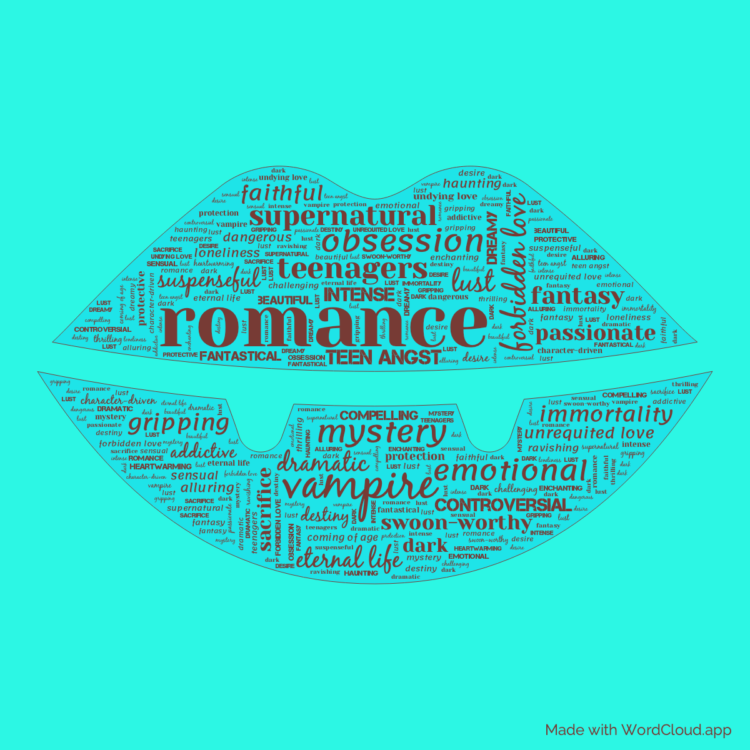Everyone knows the story, even if they haven’t read it or seen it for themselves. They’ve probably heard some of the iconic quotes, ranging from “Where the hell have you been, loca?!” to “You better hold on tight, spider monkey.” But in case you haven’t figured it out, I’m talking about the “Twilight” series — the five-film series starring Kristen Stewart, Robert Pattinson, and Taylor Lautner. Even though it’s been 12 years since the last movie (“The Twilight Saga: Breaking Dawn — Part 2”) came out, the series still maintains its popularity, with many fans referring to the series’s resurgence as “the Twilight Renaissance.” With the series growing popular again, it’s hard not to wonder what makes this series so popular more than a decade later.
“A huge part of the film’s appeal was that it was made for women, by women.”
The first “Twilight” movie came out in 2008, making around $70 million on its opening weekend and $193 million through its entire domestic run: 2008’s 12th highest-grossing film. A huge part of the film’s appeal was that it was made for women, by women. The book series that the movies were based on was written by a woman, and the first film was directed by a woman, which was rare to find in 2008. As such, the series was appealing to a demographic Hollywood was afraid to touch.
Melissa Silverstein from the advocacy group Women and Hollywood described it best. “The general consensus in Hollywood is that films and books made for men and boys are seen as ‘universal,’ and things that are made for women and girls are somehow seen as the ‘other,’” she told The Guardian.
Women and especially teenage girls were a huge reason why “Twilight” became successful. This forced Hollywood to acknowledge that movies about women could be successful, and marketing to women and girls could be successful. Once the industry realized they had a relatively untapped audience they could market to, there was a boom of movies that were targeted towards young girls, including “The Hunger Games,” “Divergent,” and “Wonder Woman.”
“After the success of ‘Twilight,’ we saw more romance books that appealed to young girls.”
The impact of ‘Twilight’
“Twilight” had an outsize impact on the writing industry, spurring both the popularity of the young adult (YA) genre and paranormal romances. After the success of “Twilight,” we saw more romance books that appealed to young girls such as “The Hunger Games,” “The Mortal Instruments,” “Shadow and Bone,” and “Divergent.” These books often copied the formula that made “Twilight” so popular: The main characters in these books were female, and they were often caught in a love triangle between two male characters that fans would grow invested in. In addition, there was a rise in supernatural-themed television shows and movies after “Twilight,” such as “The Vampire Diaries,” “Teen Wolf,” and “Jennifer’s Body.”
Another massive impact associated with “Twilight” is the growing popularity of fanfiction. The famous series “Fifty Shades of Grey” started as “Twilight” fanfiction. Author E.L. James originally published her work on the popular fanfiction site Fanfiction.com in 2009 before removing all references to the original series and then publishing her story for the world to read. The success of “Fifty Shades of Grey” led to many publishers combing through fanfiction sites to find stories to adapt and sell. Many of the romance films and books today have roots tying back to fanfiction.
What was it about ‘Twilight’ that people liked back then?
Psychologists say “Twilight” performed well because audiences wanted the romantic relationship that the main characters Bella Swan and Edward Cullen have. Psychologist Niloo Dardashti made a documentary in 2012 in an attempt to understand why women were drawn to “Twilight,” and she concluded that female audiences enjoyed seeing the love Edward had for Bella.
“He’s kind of like this ultimate example of someone who would be just totally validating to their partner,” she told U.S. News.
Stephen Snyder, assistant clinical professor of psychiatry at Mount Sinai School of Medicine, thinks people are drawn to this idealized, unrealistic relationship between Edward and Bella. “Nothing she ever does is boring to him. He never gets restless … It’s all Bella, all the time,” he told U.S. News.
The rise of social media only heightened the success of “Twilight.” The series came out around the time that a lot of fandoms were digitized. Youtube, Tumblr, and Twitter (now X) were all relatively new applications where users could discuss their love of “Twilight” among other pop culture icons. This is where fans had the famous Team Jacob and Team Edward debate. Social media provided the outlet for fans to express themselves and find like-minded individuals all while keeping track of what was new in the series. In fact, the “Twilight” Twitter account became the first to reach a million followers in 2012, right around when the film series was coming to an end.
How did ‘Twilight’ maintain this popularity?
It’s now been 12 years since the series came to an end and 16 years since the first film was released. A lot of the opinions around the films have changed as fans become more aware of the flaws surrounding the films, such as the blandness of Bella character, the awkward acting, and the even more awkward one-liners. Fans have become aware of the fact that Edward and Bella’s relationship isn’t as ideal as people used to think it was; Edward’s habits no longer come off as dedicated and romantic, but rather as creepy and stalker-like. So then why can’t we resist engaging with the series?
One reason is hate-watching — when you watch to laugh at it or criticize it. Many fans derived joy from criticizing “Twilight” and acknowledging its flaws. The fun of watching these movies is remembering how insane it was and finding new details to obsess over.
“Fans took comfort in ‘Twilight’ as a way to escape reality.”
As for the “Twilight Renaissance,” it has to do with the nostalgia the series brings with it. During the pandemic, people were looking for anything to take their minds off of the stress of their everyday lives. So, they took comfort in “Twilight” as a way to escape reality.
At the end of the day, “Twilight” did its job of appealing to a new audience, and hopefully more people can watch the movies and appreciate the chaotic insanity that it is.






